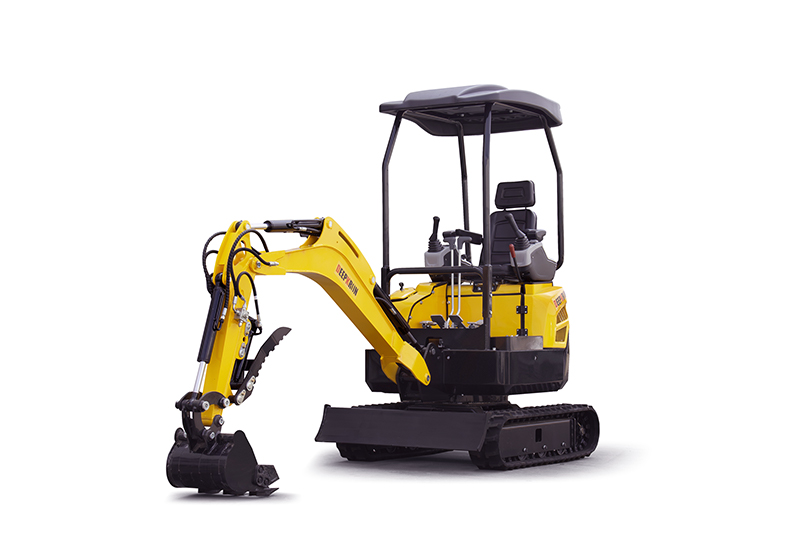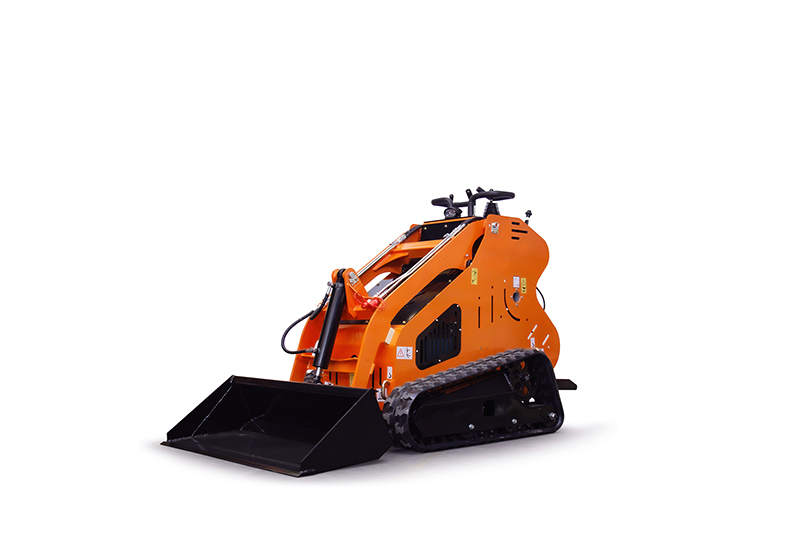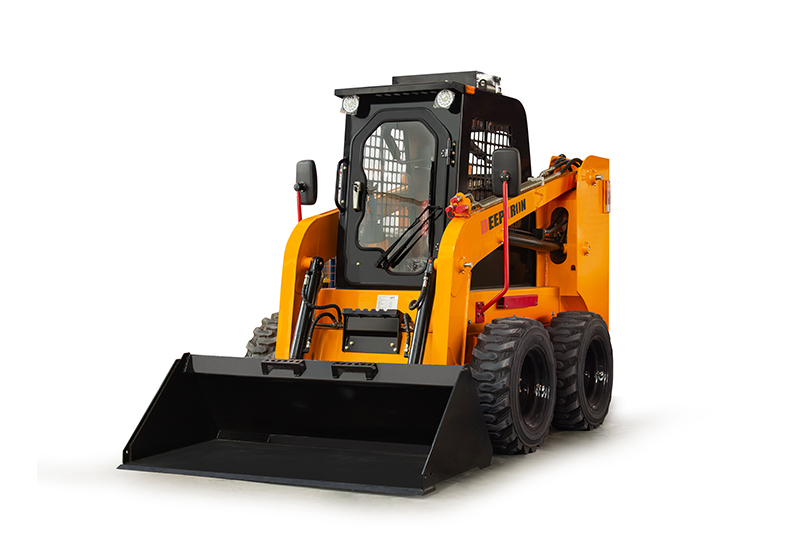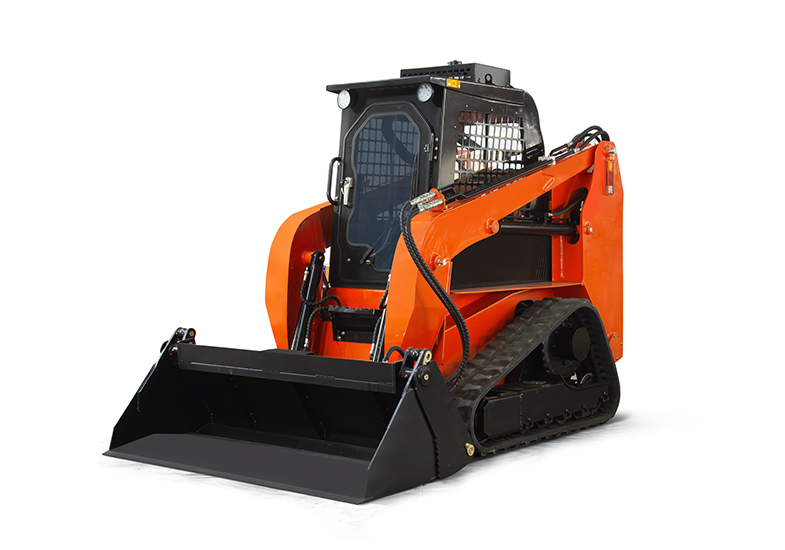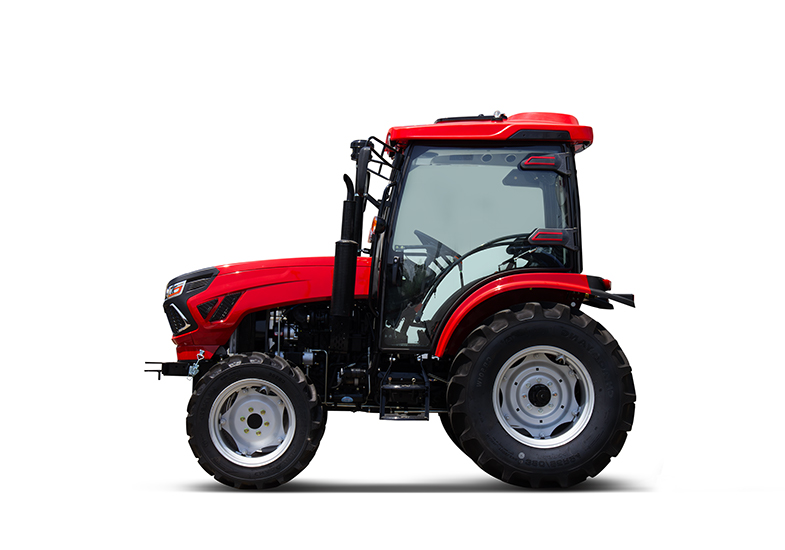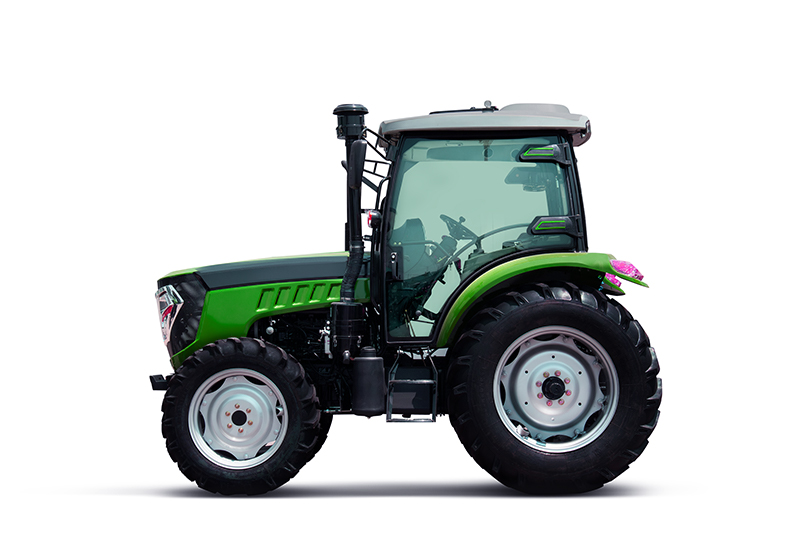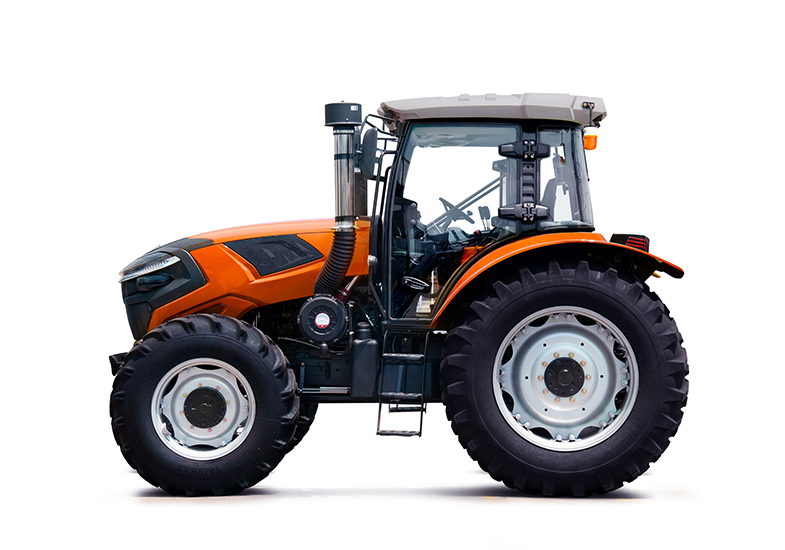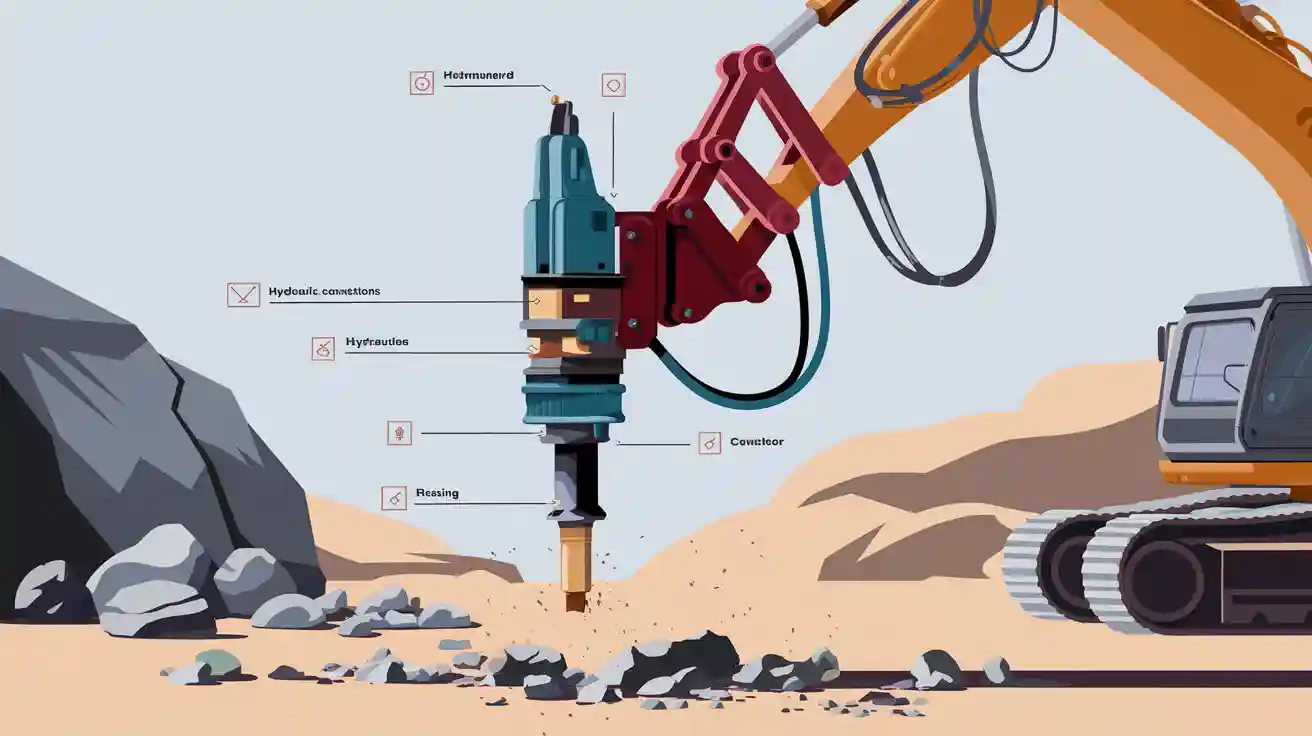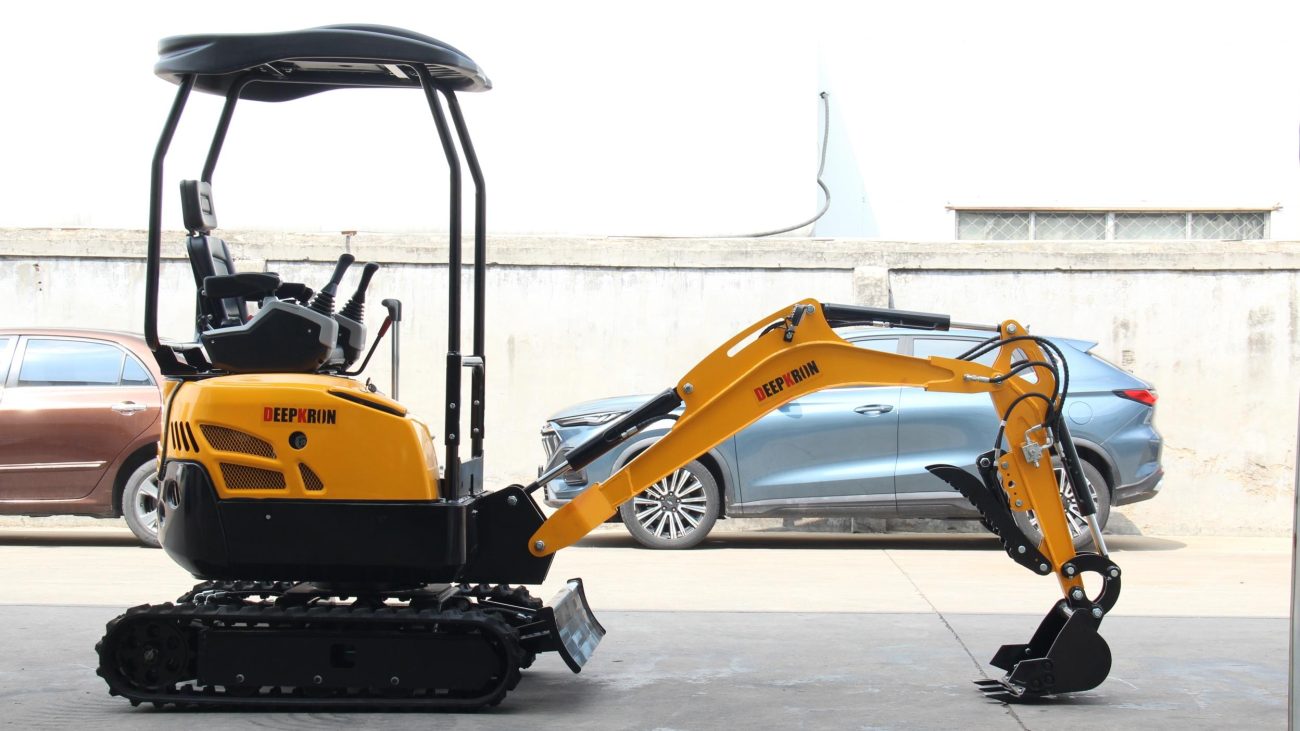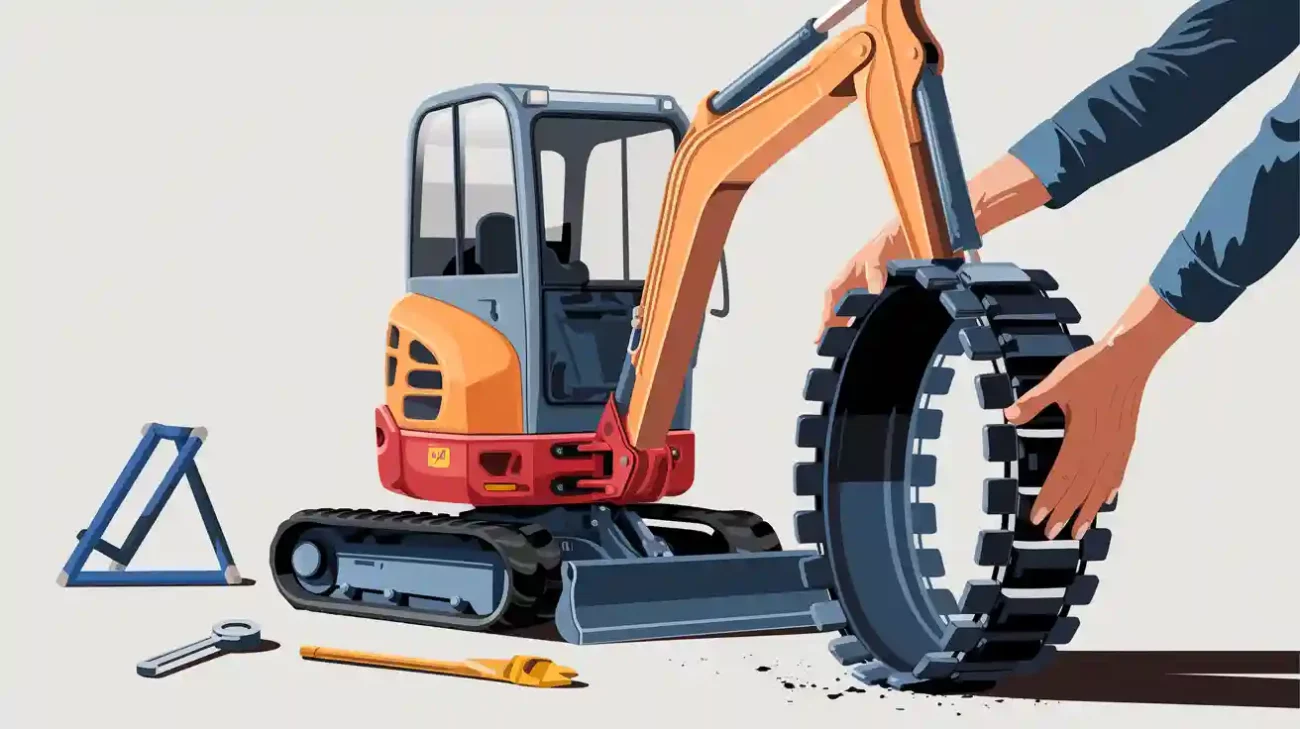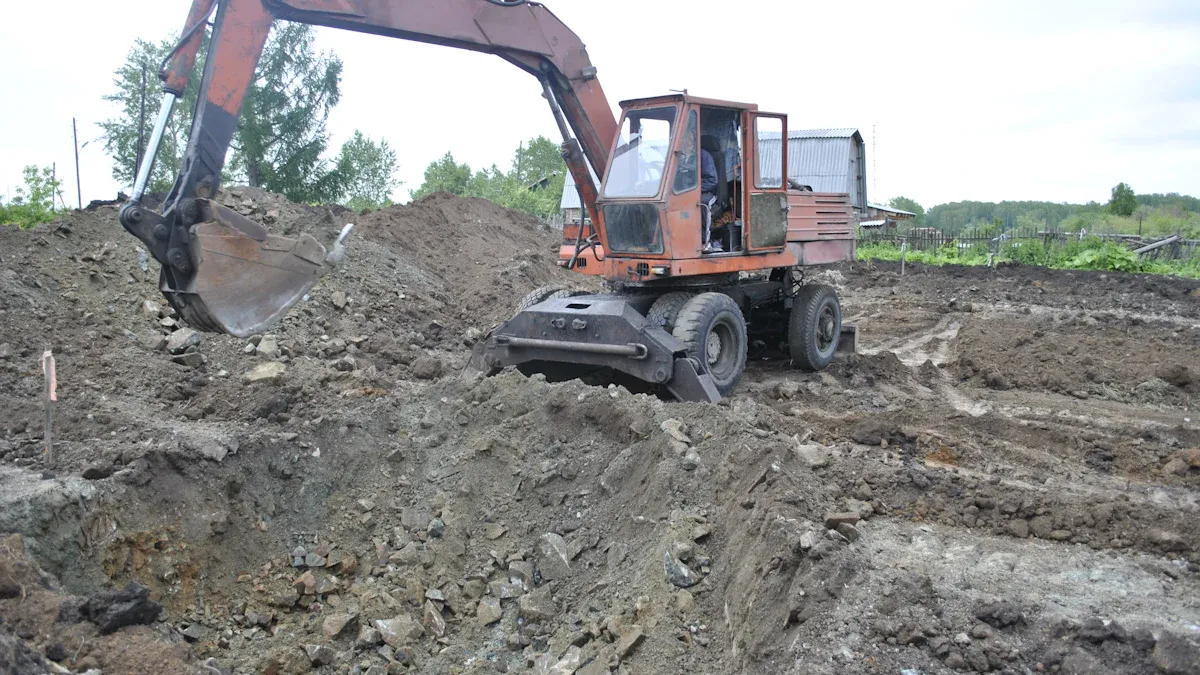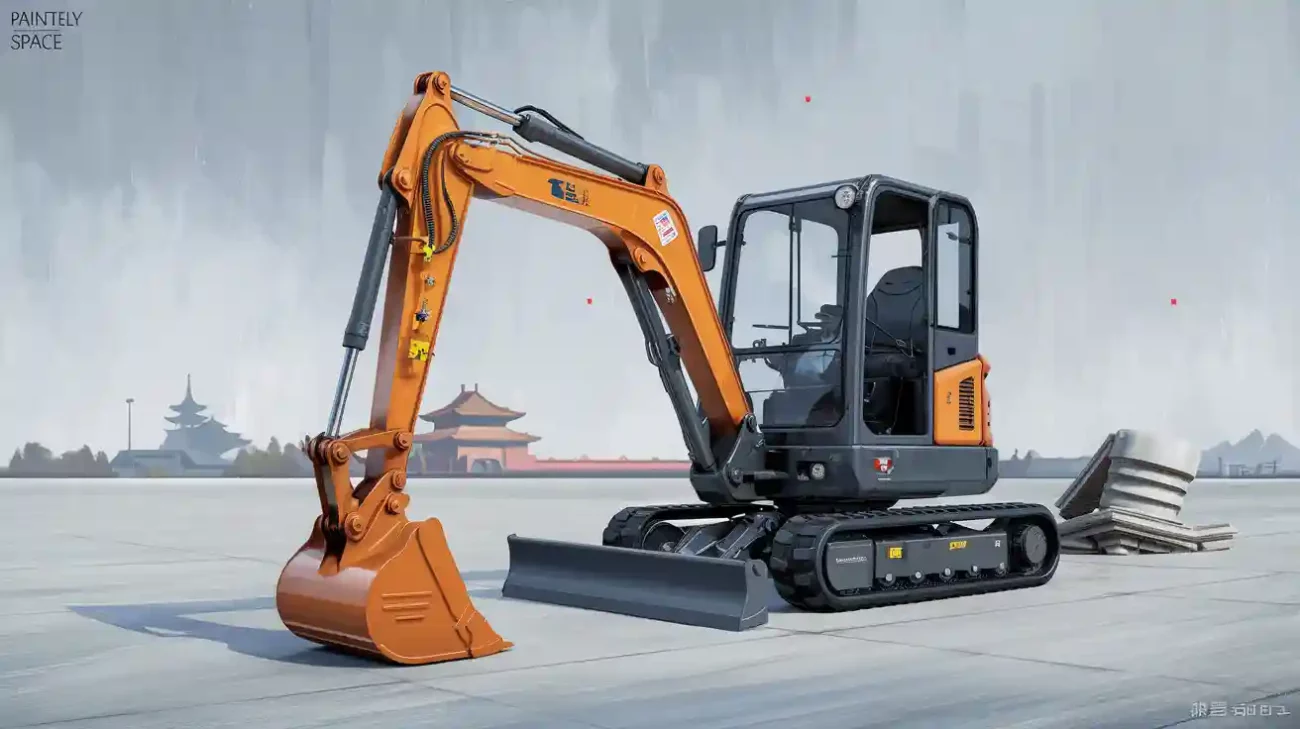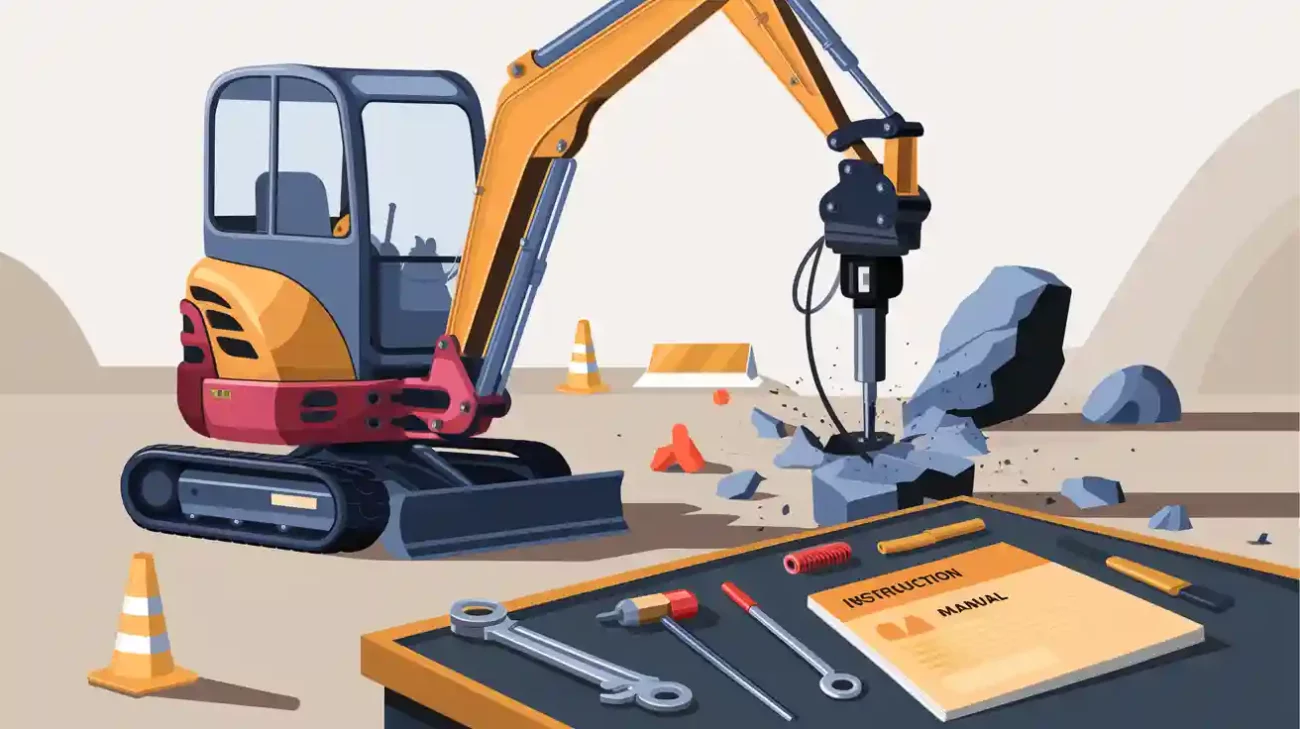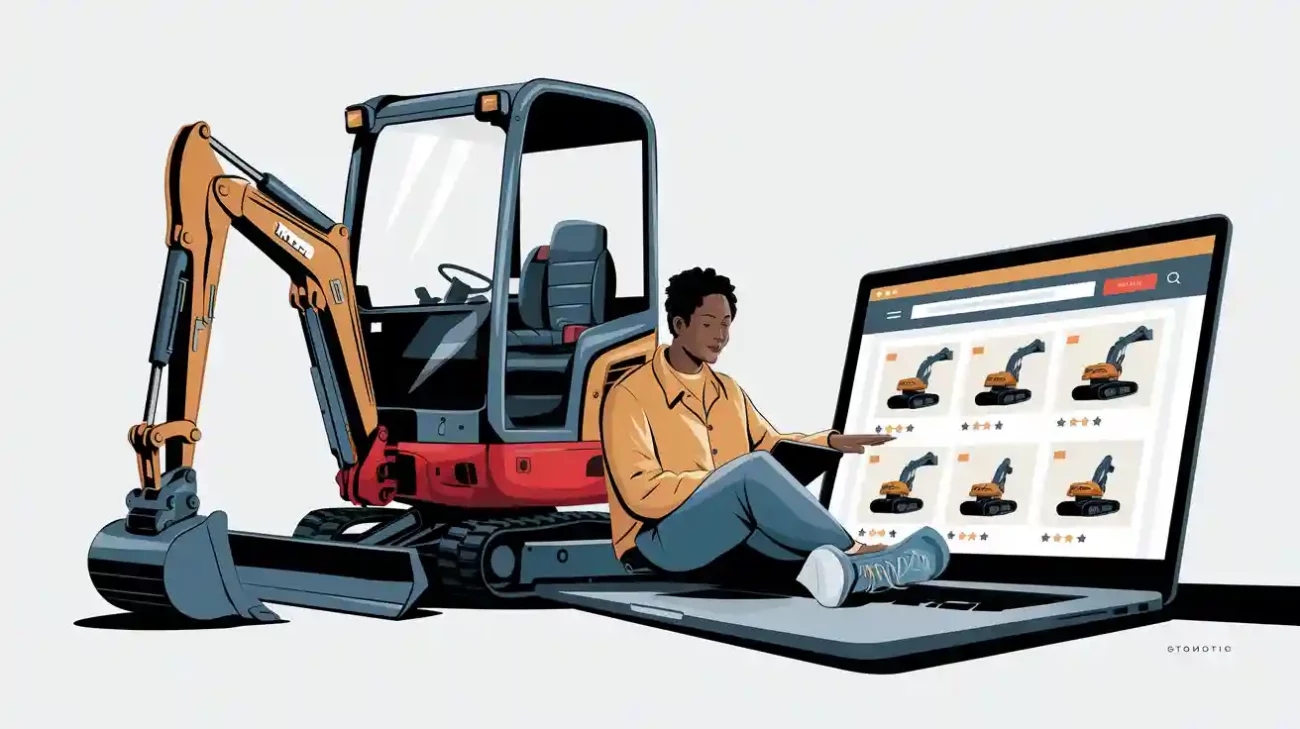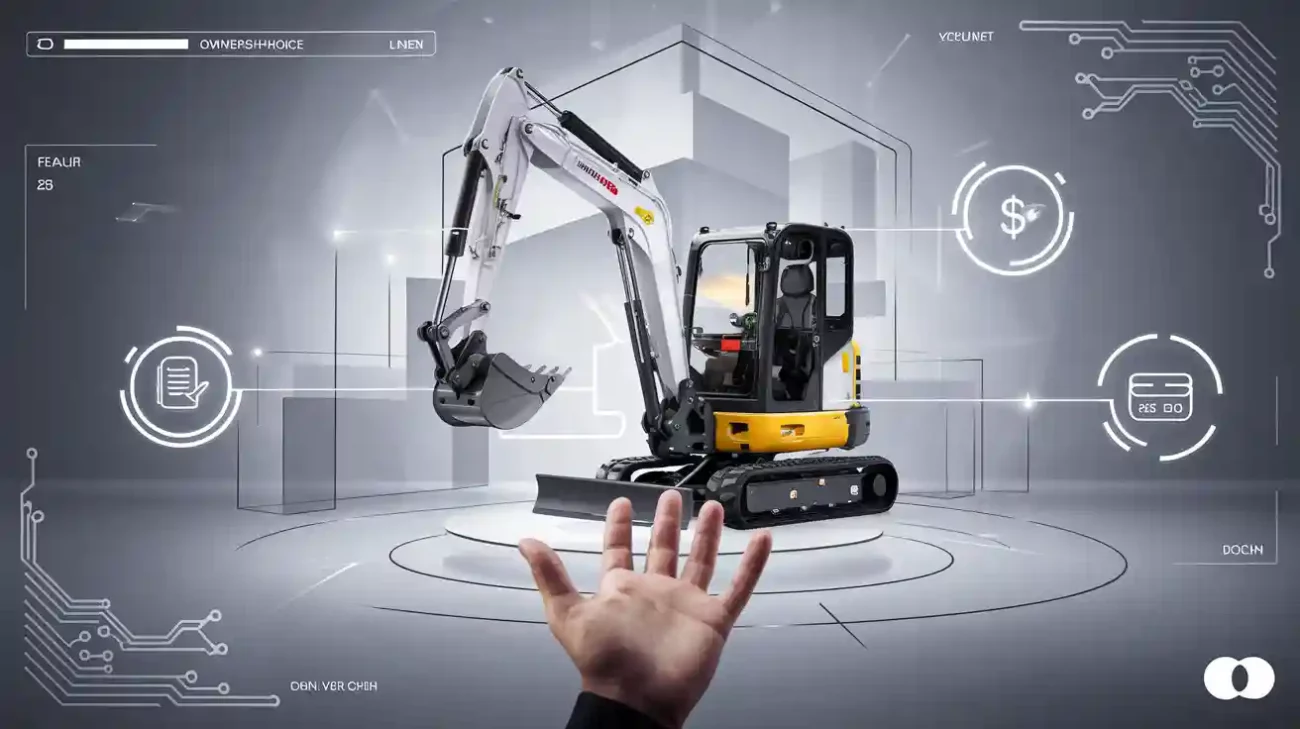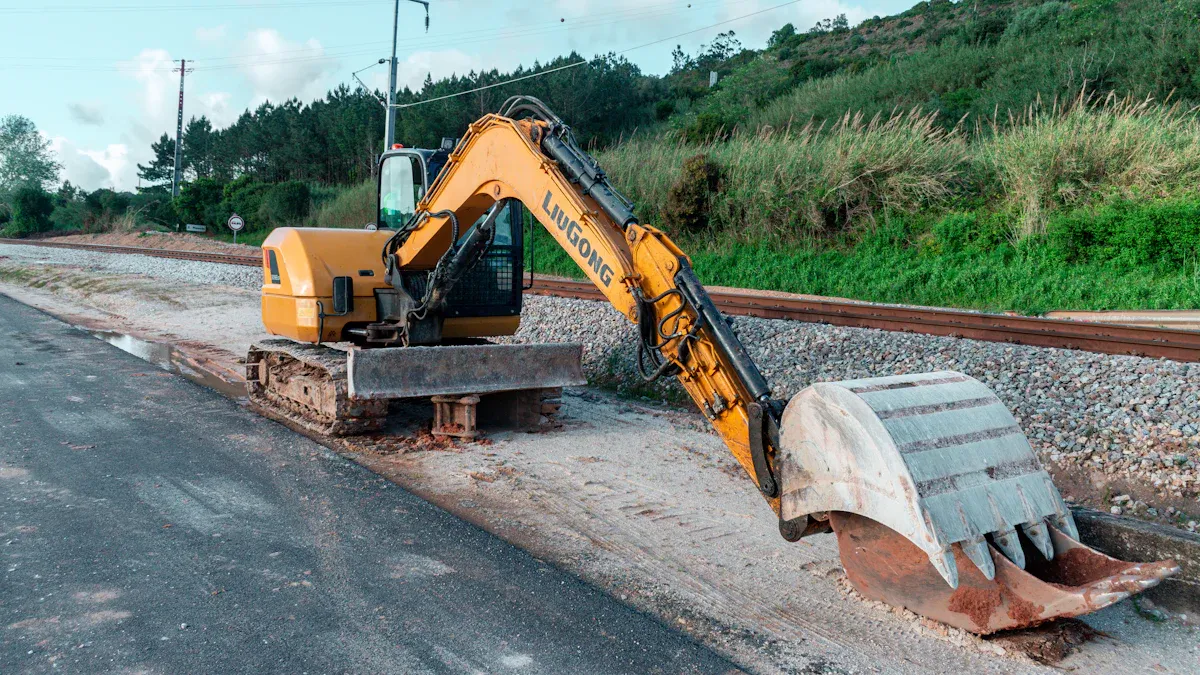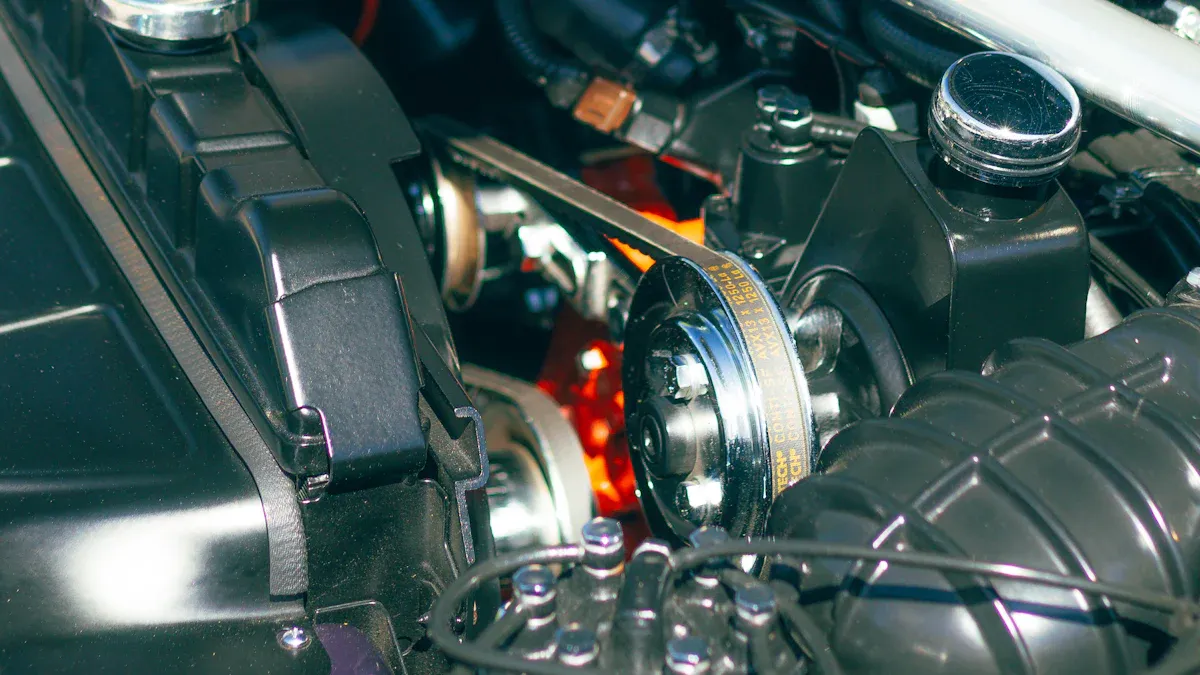A hydraulic breaker hammer is a strong tool. It is made to break rock, concrete, or other hard things. Workers attach it to machines like excavators. They use it for demolition and mining jobs. The world market for hydraulic breaker hammers was USD 2.5 billion in 2023. Experts think it will keep growing fast. This is because many people use them for building roads and bridges.
Metric/Aspect | Data/Value | Explanation/Context |
|---|---|---|
Global Market Size (2023) | USD 2.5 billion | This shows how big the market is for hydraulic breakers around the world. |
Projected Market Size (2032) | USD 4.1 billion | This means the market is expected to get bigger. More people will use them in building and other jobs. |
Asia Pacific Market Share (2024) | 36.7% | This is the biggest share by region. It shows many are used in fast-growing places like China and India. |
Performance Improvements | Enhanced impact force, durability, energy efficiency, AI integration | This means new technology makes them work better and safer. |

Hydraulic breaker hammers now hit harder and last longer. They also have features that make less noise. These things make them very important for today’s building sites.
Key Takeaways
Hydraulic breaker hammers use strong oil pressure. They hit hard and fast. This breaks rock, concrete, and asphalt easily.
These tools help workers save time. They make work easier for people. They also make job sites safer. They lower dust, noise, and shaking.
Hydraulic breakers can fit many machines. They work with excavators and skid steers. This makes them useful for many jobs. They are good for building and mining work.
You need to pick the right breaker. Match its size and oil flow to your machine. Also, think about the job you need to do. This helps stop damage and makes it work better.
Take care of your hydraulic breaker often. Pick the right tool bit for the job. Use features like automatic oiling. This helps the breaker last longer and work well.
What Is a Hydraulic Breaker Hammer
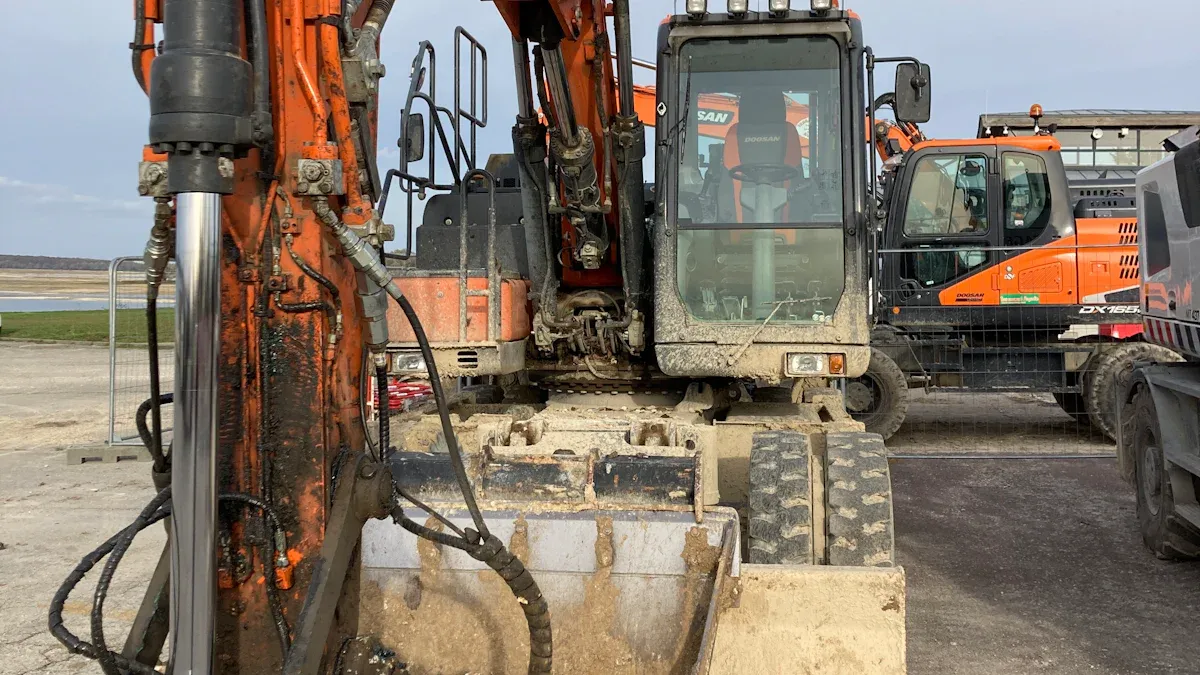
Main Purpose
A hydraulic breaker hammer is a strong tool that breaks hard things like rock, concrete, and asphalt. It was first made in 1967. People in construction started using it soon after. Now, it is very important for jobs like demolition, digging, and quarrying. The main job of a hydraulic breaker is to hit hard surfaces over and over. This helps break them apart quickly.
Hydraulic hammers use oil under high pressure to move a piston. The piston hits a tool bit or chisel. This makes a force much stronger than pneumatic hammers. Hydraulic breakers can finish jobs in hours instead of weeks. Workers use them because they:
Help finish work faster and with less effort.
Save money by needing fewer workers and no explosives.
Give better control, so workers do not break things by mistake.
Are better for the environment because they make less noise and dust.
Note: Hydraulic breakers are now a must-have for building projects. They save money over time and make machines more useful.
Hydraulic breakers are known for being strong, lasting a long time, and working on many jobs. They also have new features like automatic oiling and remote checks. These help them work better and stop less. Top brands like Caterpillar H115E and Atlas Copco HB 3100 are known for being powerful and reliable.
Common Equipment Used With
Hydraulic breakers can be put on many big machines. This makes them useful for many kinds of work. The most common machines are:
Hydraulic excavators: These give the power needed for the breaker. Workers use them for big jobs like tearing down buildings and digging rocks.
Backhoe loaders: These can dig and break things. They are good for smaller jobs.
Skid steer loaders: These are small and easy to move. They work well in tight spaces or cities.
Mini excavators: These are used for small jobs or in gardens. They let workers be careful and exact.
Carrier Type | Typical Application | Advantages |
|---|---|---|
Hydraulic Excavators | Heavy demolition, quarrying | High power, large reach, efficient operation |
Backhoe Loaders | Medium demolition, roadwork | Versatility, easy attachment changes |
Skid Steer Loaders | Urban demolition, tight spaces | Maneuverability, compact size |
Mini Excavators | Landscaping, small-scale breaking | Precision, minimal site disruption |
Hydraulic breakers come in many sizes to fit different machines and jobs. This means workers can use them for breaking big rocks or taking out old concrete. Hydraulic breakers are made to use oil well and are easy to handle. This helps workers stay safe and get more done in different places.
Hydraulic hammers have changed how teams break things down. When workers use the right machine with a hydraulic breaker, they finish jobs faster and safer. They also help the environment. More people want hydraulic breakers because they are important for building roads, mining, and city projects.
How Hydraulic Breakers Work
Hydraulic Mechanism
A hydraulic breaker uses oil under pressure to make strong hits. The machine, like an excavator, sends oil through hoses to the breaker. The oil goes into a chamber under the piston. The high pressure pushes the piston up. This squeezes nitrogen gas above the piston. When the energy is released, the piston moves down fast. The piston hits the tool bit hard.
This process happens many times each minute. The breaker changes oil energy into force. The piston’s movement makes impact energy and force. The tool bit passes this force to the material. This breaks rock, concrete, or asphalt. The breaker works well if it turns oil power into strong, quick hits. Engineers use a formula to check how well it works: η_h = (E_i · f_i) / (Q (P_s − P_r)). E_i is energy per hit, f_i is hits per second, Q is oil flow, and P_s and P_r are oil pressures.
Tip: Operators pick tool bits for each job. Chisels are best for rocks and concrete. Moils work on softer rock and concrete. Spades are for asphalt and packed soil. Blunt tools crush hard, brittle things.
Think of the piston as a hammer and the tool bit as a nail. The oil gives the piston its power. The piston’s force drives the tool bit into the material. This system lets the breaker work fast and well, even on hard surfaces.
Key Components
A hydraulic breaker has many important parts that work together. The main parts are:
Piston: The piston moves up and down in the cylinder. It gets pressure from oil and stores energy by squeezing nitrogen gas. When released, it hits the tool bit hard.
Tool Bit (Chisel, Moil, Spade, Blunt): The tool bit touches the material. It is made from strong steel or carbide. Operators can change the tool bit for each job.
Valve System: The valve controls how oil flows. There are inner and outer valves. Inner valves are inside the cylinder and give better control. Outer valves are outside and are easier to fix.
Accumulator: This part stores energy as squeezed nitrogen gas. It helps the piston hit harder and protects the system.
Seal Kits: Good seal kits keep oil inside. They stop leaks and help the breaker last longer. They also keep out dust and dirt.
Housing and Isolation Pads: The housing holds all the parts. Isolation pads cut down shaking and protect the machine and operator.
Lubrication System: Automatic oiling keeps the tool bit and moving parts slick. This cuts down wear and helps the breaker last longer.
People often ask how a hydraulic breaker works in tough places. The answer is in these good parts. Strong materials and smart design help the breaker handle heavy loads and rough jobs. Features like stroke adjustment, energy recovery, and real-time checks make it work better and safer. Damping systems protect the machine and operator. Anti-blank firing stops damage when the tool bit is not touching anything.
Performance and Durability Highlights:
Strong materials and tough parts make it last longer.
Automatic oiling and good seals mean less fixing.
Energy recovery and stroke control save fuel and help the tool last.
Damping and less shaking protect workers and machines.
Real-time checks and safety features help work go smoothly and safely.
A hydraulic breaker needs all its parts to work well together. When every part does its job, the breaker is strong, safe, and works well on every job.
Key Features of Hydraulic Breaker Hammers
Power and Efficiency
Hydraulic hammers hit very hard with each strike. They can make up to 1,500 hits every minute. This helps workers finish jobs much faster. The hydraulic hammer uses oil under high pressure to move the piston. This makes strong hits that break concrete, asphalt, and even bedrock. Many models, like Rammer hydraulic hammers, use strong materials. This helps them last longer and work well in tough places. Operators see that these machines need less fixing and break down less often. This helps projects stay on time. Quick attachment changes let workers use the equipment more, up to 35% more. This means less waiting and more money saved.
Tip: Pick a hydraulic hammer with energy recovery and automatic oiling. These features help the tool work better and last longer.
Safety and Precision
Hydraulic hammers make job sites safer by doing the hard breaking work. This means workers do not have to do as much heavy lifting. It lowers the chance of getting hurt. The design lets operators control the hammer very well. They can break things in the right spot without hurting other parts. Damping systems and anti-blank firing keep the machine and operator safe. These features stop bad shaking and wrong hits. Safety features help teams work safely, even in busy or careful places.
Versatility
Hydraulic hammers are great because they can do many jobs. Workers can put them on different machines like excavators, backhoe loaders, and skid steers. This makes hydraulic hammers important for many tasks, such as:
Breaking concrete and asphalt for roads and big projects
Tearing down buildings and getting sites ready
Breaking big rocks and hard materials
Hydraulic hammers can handle new site needs and change tools fast. New technology makes them use less energy, feel better for operators, and be checked from far away. These things make hydraulic hammers a smart pick for both small city jobs and big building projects.
Types and Applications of Hydraulic Breakers
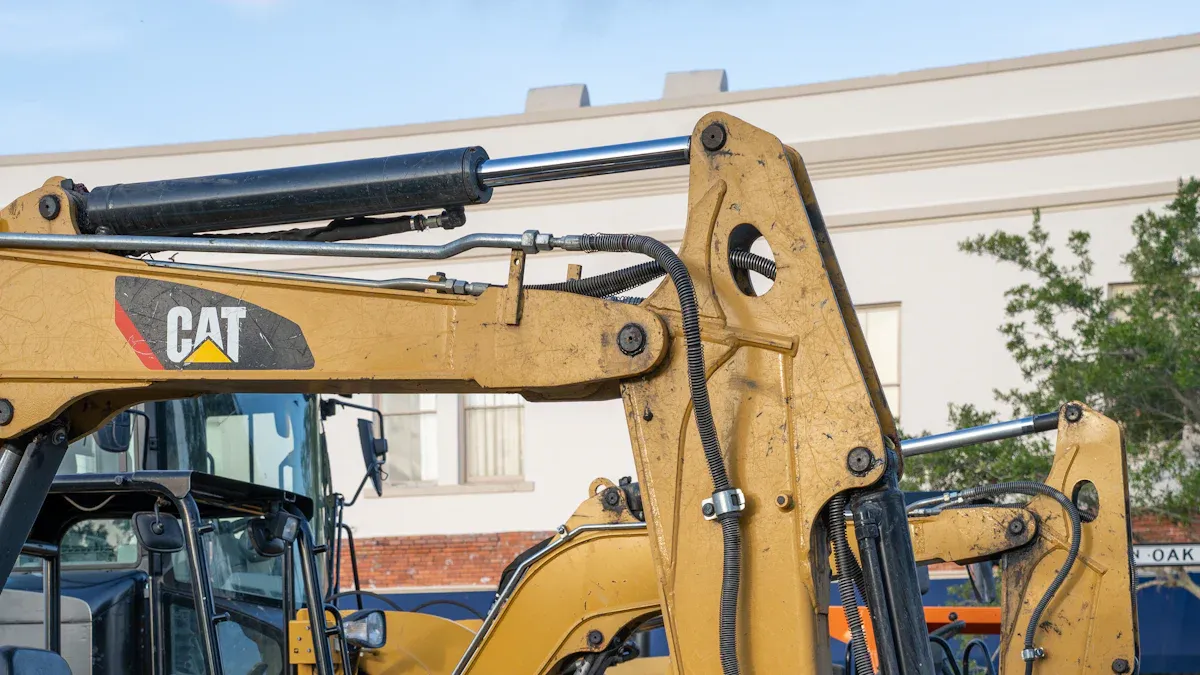
Inner Valve vs. Outer Valve
Hydraulic breakers have two main types: inner valve and outer valve. The inner valve type puts the control valve inside the cylinder. This design lets workers control the tool better and faster. Many people pick inner valve models for careful demolition or small spaces. The outer valve type has the valve outside the cylinder. This makes fixing the breaker easier and saves time on busy sites.
Type | Main Feature | Best Use Case |
|---|---|---|
Inner Valve | Fast response | Demolition of concrete, urban jobs |
Outer Valve | Easy maintenance | Heavy construction, quarrying |
Both types use oil pressure to move a piston. The piston hits the tool bit, which breaks rock or concrete. Choosing inner or outer valve depends on the job and if you need speed or easy repair.
Typical Uses
Hydraulic breakers are used for many jobs. Workers use them to tear down buildings, fix roads, and mine. These tools break rocks, asphalt, and strong concrete. In building and quarry work, a hydraulic rock breaker can split big rocks or get land ready for new work. Operators often use hydraulic breakers to break concrete in bridges, tunnels, and building bases.
Note: Hydraulic breakers are safer than old ways like blasting. They work well in cities, make less dust, and are quieter. Teams can aim the tool, so there is less danger to nearby things.
Hydraulic breakers help finish jobs faster, need less hard work, and make sites safer. A hydraulic breaker can take down buildings without using explosives. This is good for city work. The hydraulic rock breaker is also used in mining and quarrying to break hard stone with care. Breaking concrete is easier and cleaner with these machines.
Hydraulic breakers fit many machines, so they work in many places. They can do small fixes or big demolition jobs. The good things about hydraulic breakers make them a top pick for today’s building teams.
Choosing a Hydraulic Breaker Hammer
Selection Factors
Picking the right hydraulic breaker hammer takes careful thought. You need to match the breaker’s size to the carrier machine’s weight. The breaker should be about 10-15% of the carrier’s weight. This helps the machine stay steady and work well. The hydraulic flow and pressure must fit the carrier’s system. Workers use flow meters to check oil and pressure levels. If the breaker needs more oil than the carrier gives, pick a smaller breaker or a bigger carrier.
Manufacturer compatibility charts and OEM guides help match breakers to carriers. These charts show things like weight, oil flow, pressure, and lift power. Using the wrong size breaker can break the machine or make it too hot. The carrier must handle the force from the breaker to avoid damage.
The job also matters when picking a breaker. Harder materials, how long the job lasts, and project goals all change which breaker is best. Some new breakers can change speed for different jobs. If there is lots of dust or water, you may need special parts.
Key Selection Factors Table
Factor | Why It Matters |
|---|---|
Breaker-to-Carrier Ratio | Keeps the machine steady and strong |
Hydraulic Flow/Pressure | Stops damage and helps it work better |
Material Hardness | Makes sure the breaker is strong enough |
Project Duration | Helps the tool last longer |
Environmental Needs | May need extra features |
Practical Tips
Many contractors choose hammers based on what is easy to get. But doing research helps you pick better tools. User reviews and fleet data show buyers should check price, warranty, repair costs, and if parts are easy to find. Testing the hammer with your machine helps make sure it works well. Asking other users for advice can help you avoid mistakes.
Tip: Always set the oil flow and pressure to match the hammer’s needs. This keeps the breaker safe and working right.
Taking care of the breaker helps it last longer. Operators should use high-heat grease, store it right, and never use it without hitting something. Firing for 5-10 seconds at a time stops it from getting too hot. Never use the hammer bit to pry or hit at a bad angle. Good bits cost more but protect the hammer and save money on repairs.
Performance models use real job data to match hammers to rocks and machines. These models help plan jobs and control costs. By following these tips, users can pick a hydraulic breaker hammer that works well and lasts a long time.
A hydraulic breaker hammer helps teams do hard demolition work. Operators use it to change oil pressure into strong hits. This breaks concrete and rock quickly. Important features like safety, efficiency, and versatility help workers do many jobs. Knowing the types of hydraulic breaker and how to pick the right hydraulic hammer helps teams work faster and safer. Use this information to choose the best tool for each project.
FAQ
What maintenance does a hydraulic breaker hammer need?
Operators need to check oil every day. They should look at seals and grease the tool bit. Worn parts must be replaced right away. Doing these things keeps the breaker safe and helps it last longer.
Can one hydraulic breaker fit different machines?
Many hydraulic breakers have mounts that fit many machines. Operators can move them between machines that work with them. Always look at the maker’s chart before switching machines.
How does a hydraulic breaker improve job site safety?
Hydraulic breakers mean workers do less hard work. This lowers the chance of getting hurt by flying pieces or lifting heavy things. Safety parts like damping pads and anti-blank firing help keep people and machines safe.
What tool bits work best for different materials?
Material | Recommended Tool Bit |
|---|---|
Concrete | Chisel |
Asphalt | Spade |
Hard Rock | Moil |
Brick | Blunt |
Operators should pick the right bit for each job. This helps them get the best results.

